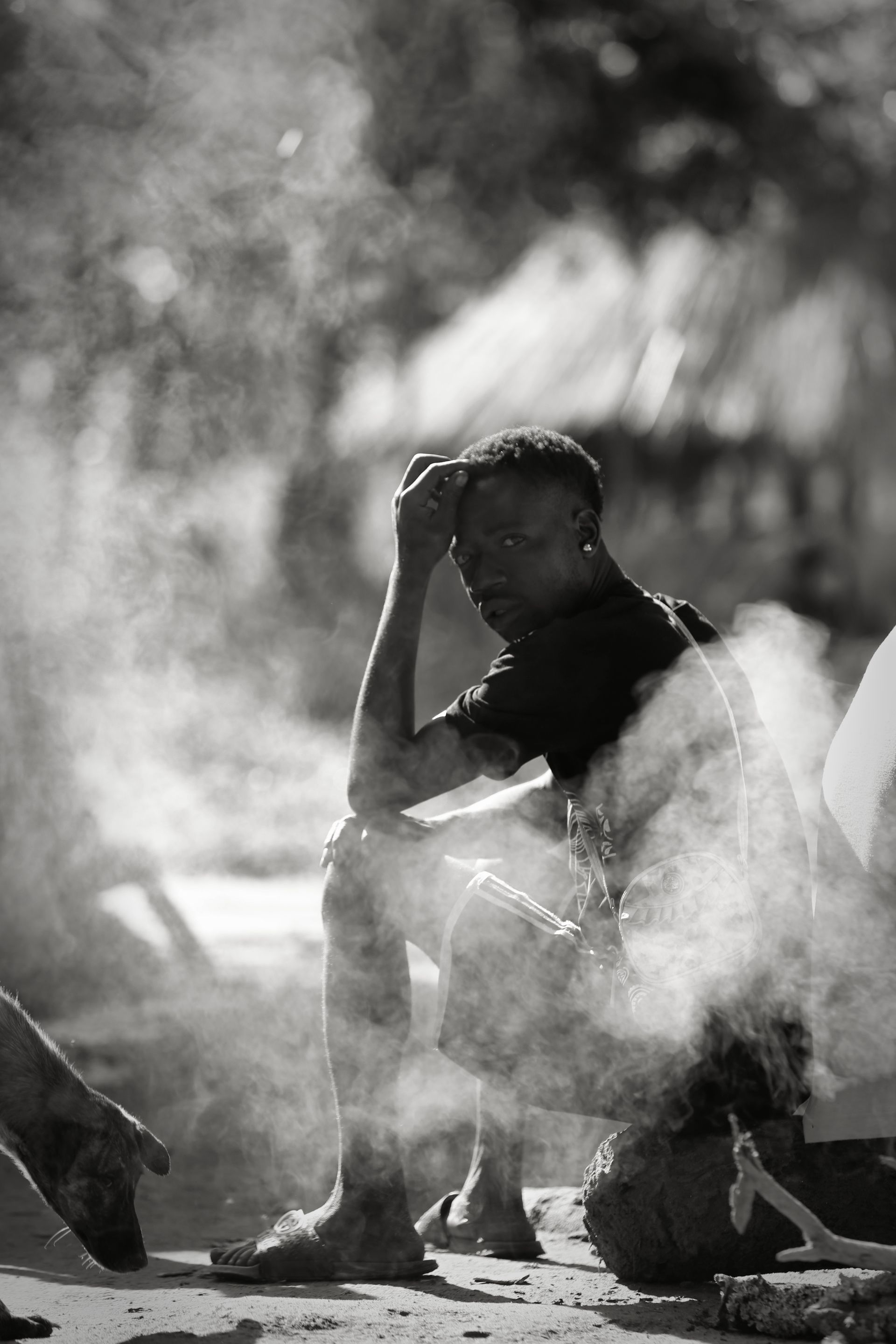A 5-year-old boy presents with exquisite abdominal tenderness and ten-day history of fever with seizures. The clinical picture points toward cerebral malaria with typhoid, a surgical emergency when accompanied by vomiting or ruptured bowel. Cavango is not a surgical clinic, however, removing ulcerated ileum requires air evacuation to Lubango and consult at CEML. Families are billed for these expenses, but rarely pay them, meaning the mission must make the critical decision of whether or not to spend the money. To say finances are tight here would be a gross understatement, spending must be done with precision and prejudice.
This child appeared gravely ill but did not fit the criteria for evacuation. Spending the money now would mean not having it later for a potentially more critical patient. To complicate things, his 8-month-old sister is malaria positive and had the same history of fever and seizures. Red-orange hair (indicating malnutrition) and profound anemia (estimated at a hemoglobin of 4 based on conjunctival pallor) made this child the greatest concern in the clinic (and most likely to be evacuated). These siblings were just the first of many that day, heralding the beginning of malaria season.
After much vacillation, it was decided we simply could not allocate mission resources to activate MAF when the child was able to keep down soro (water with hydration salts). We left the clinic with trepidation, telling staff to send for us if the child began to vomit. Hours passed and night turned to morning. As I poured my coffee, channel 08 on the CB radio crackled to life with matter-of-fact Portuguese: the anemic child we were most worried about had made it through, her big brother hadn't.
The parents came to us as a last resort, the decision wasn't easy for them. They had consulted their elders and gone to three other clinics before making the 200 km motorbike trip to Cavango. They asked for help, expecting us to heal their sick child. We treated with antibiotics and the tincture of time, beyond that the situation was in God's hands. Later we would find out this family had lost another child to pestilence earlier this year; their third will likely follow soon. What was lost was not only a child’s life, but trust in western medicine, and in our clinic’s relationship with the community. Post-mortem review of the case pointed to the right decision being made; death did not result from a lack of surgery, death occurred due to typhoid fever, but that was little comfort in the face of such an outcome.
Inpatients here have bunks assigned to them in a concrete building, but few stay there. Those without TB who are able to ambulate generally stay in the jangos (traditional meeting huts erected around the property). As at CEML, patients rely on family members to prepare their meals, meaning the huts are perpetually fuming smoke through their thatched roofs. Normally ebullient, regardless of physical conditions, the patient huts fell silent as the tiny body was carried out to the ambulance.
Her last living child in her arms, the mother follows the procession out of the clinic and collapses on the ground in absolute lament. A supportive crowd gathers around her as the departed is driven off to their home village. The youngest is far too critical to return home or to be without a nursemaid for long. The poor mother is left with the impossible decision to stay behind, alone, as the boy is interred; likely to relive this nightmare sooner than any of us can conceive.
We made it through the day and treated everyone both inpatient and out. With Dr. Tim still recovering from his malaria, and showing new symptoms myself, we retired home to finish meetings at the Kubacki jango there. Several minutes into a conversation about rebuilding the water lines to the clinic a frantic father bursts in crying that his child is dying. We had seen the child earlier today, a 15-month-old malaria patient who had been able to keep down his medications and had no overt signs of concern. Without warning the malaria precipitated acute respiratory distress syndrome. By the time we made it back to the clinic he had gone into respiratory arrest and passed.
Earlier in the day I had felt so close to the inpatients at the mission. I felt accepted, like the patients knew I was there for them as an equal. After the second loss of the day we piled into our lifted 4x4 to motor back to our safe ranch home full of electric appliances. A tormented mother hoisted the lifeless body of her son onto her back and secured him with a pano, his little hands no longer holding on for security. We passed glaring eyes filled with mistrust and I melted back into my seat. Equal? Not even close.







